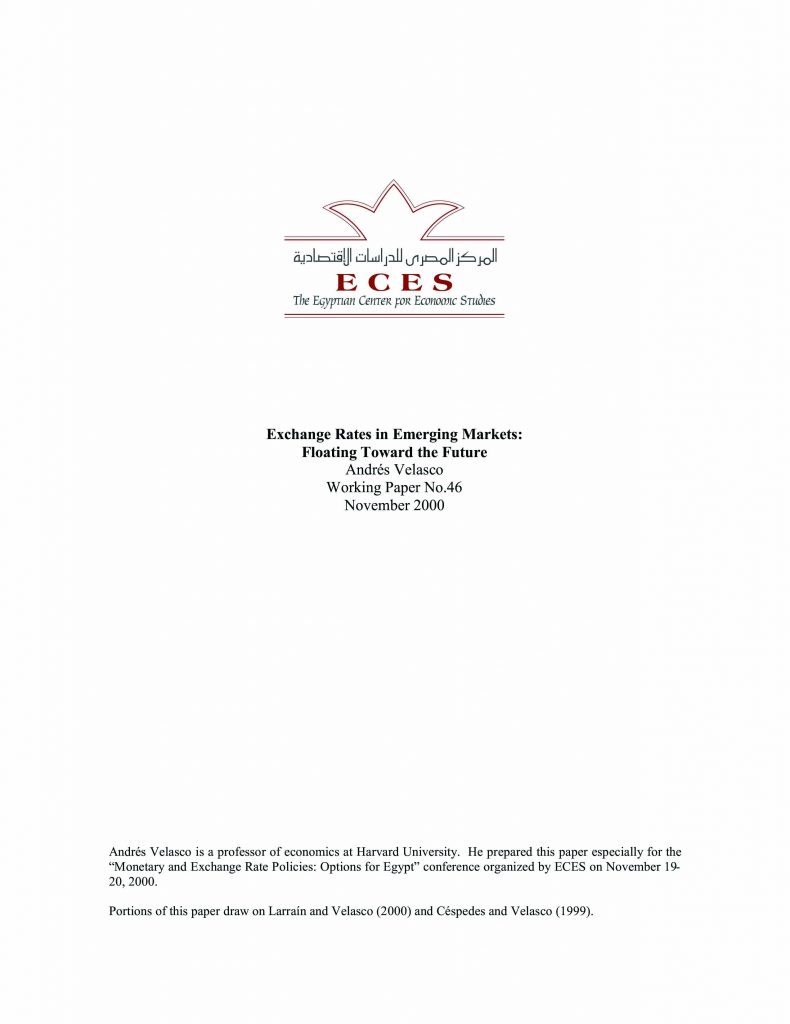Abstract:
In light of the crises that occurred in East Asia, Eastern Europe and South America in recent years, this paper argues that the most realistic option for the majority of emerging and developing countries is to adopt a regime that entails substantial exchange rate flexibility, or a “floating” rate. The paper refutes the reasons for fearing the adoption of flexible regimes and credits a more flexible regime with the ability to respond to shocks from abroad; prevent bank crises; and help restore stability when facing problems resulting from the dollarization of liabilities.
The paper also discusses flexible exchange rates and monetary policy in practice and offers suggestions on how to craft actual policies. It point out that the best policy response to adverse external financial shocks involves a combination of domestic interest rate adjustment and real depreciation (i.e., a dirty float). It also notes that the success of flexible exchange rate regimes requires complementary policies, including prudential regulation of the financial system and a counter-cyclical fiscal policy.

